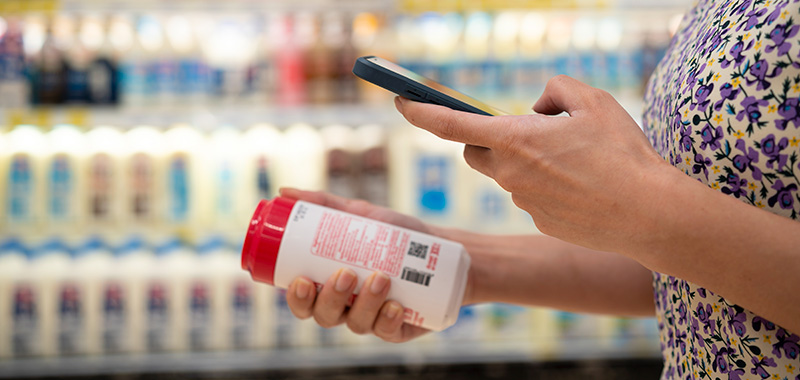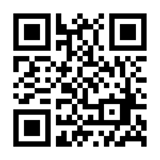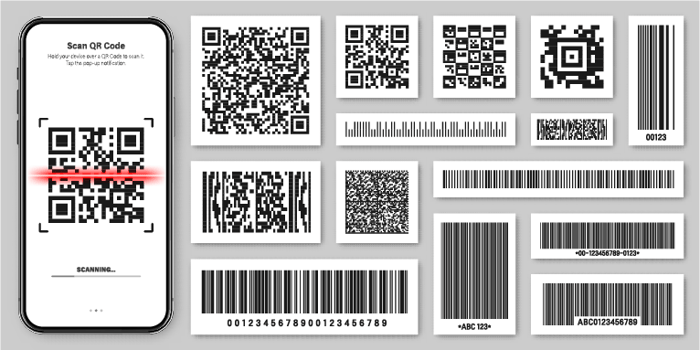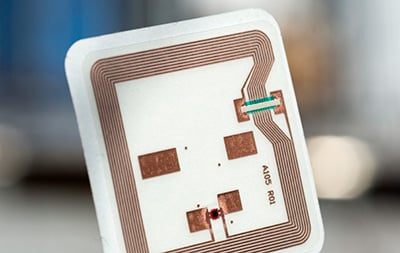
When we talk about “smart” technologies, we don’t just mean clever ideas. This designation refers specifically to products and tech that connect to digital networks, which allows for better tracking, monitoring, and information sharing.
 How does this apply to your product labels? If you’ve ever scanned a QR (Quick Response) code, you’ve already seen smart label technology in action. Smart labels make it possible to embed all kinds of helpful information into your labels without compromising design or legibility — and that’s just the beginning.
How does this apply to your product labels? If you’ve ever scanned a QR (Quick Response) code, you’ve already seen smart label technology in action. Smart labels make it possible to embed all kinds of helpful information into your labels without compromising design or legibility — and that’s just the beginning.
Here’s what you need to know about smart labels and the new opportunities they offer.
What’s the Purpose of a Smart Label?
There are all kinds of potential uses for smart labels, but most applications tend to fall into one of two categories. The first is consumer-facing, which is the use of smart labels to convey information to a potential or existing customer. These typically appear in the form of a QR code.
The second category is business-facing, in which case you’re using a smart label to share information internally or with a business partner. While these might look similar to QR codes, they’re typically radio frequency identification (RFID) tags or Data Matrix codes, which are encoded differently from quick response labels.
Let’s take a closer look at each of these examples.
Using Smart Labels to Communicate With Your Customer

One of the most commonly used smart labels is the QR code. This unobtrusive square can be easily added to your product labels for customers to scan with their mobile devices. Once scanned, your QR code can direct someone wherever you like: a digital coupon, your website, or a prompt to download your app.
Smart labels can also help customers after they’ve purchased your product. For example, a spice company might use QR codes to link to a recipe book, a paint company might use them to share a guide on interior design, and an electronics company might link them to product registrations for warranty purposes.
The possibilities are endless, but the real advantage here is that a QR code offers you a way to deepen your relationship with customers even after they’ve purchased your products.
Using Smart Labels to Track and Manage Your Inventory Through the Supply Chain

The business-facing applications of smart labels can also be incredibly useful. Whether you’re using a QR code, Data Matrix code, an RFID tag embedded inside the label, or some other printed electronics for Near Field Communication (NFC), smart label technology makes it possible to track and manage your inventory through the supply chain in real time.
How does it work? The process is similar to what shipping companies like UPS and FedEx use to track packages. Just as these companies use their own tracking numbers and codes to keep tabs on their shipments, so you can use Smart Labels to keep track of your inventory.
As your products are packaged, shipped, and sold, at each touchpoint, these smart labels can be scanned to share data back to your network. Over time, all this data can even help you become more efficient as you identify areas within the supply chain that could be improved.
Who Benefits From Smart Label Technology, and How?
One of the things that makes smart label technology so appealing is that it’s adaptable enough to offer benefits to just about any industry. We touched on some examples above, but here’s a closer look at some of the benefits smart label technology can offer.
Smart Labels Can Help Keep Food and Beverages Fresh
QR codes provide food and beverage companies with the chance to speak directly to their customers. They can be used to offer information on how food is sourced and how it’s transported — even in-depth details on nutrition that wouldn’t fit within the bounds of an ordinary label.
But QR codes aren’t the only kind of smart label these companies use. Another option is the Time Temperature Indicator (TTI), which uses color-changing technology to indicate how long a product has been in transit, whether it’s been stored at the right temperatures, and how long of a shelf life it has left. For the food and beverage industry, which depends on providing fresh products to customers, this type of smart label can play an important role in quality control.
Pharmaceutical Companies Can Use Smart Labels to Improve Supply Chain Management
For pharmaceutical companies, managing the supply chain isn’t just a matter of sales. It’s also a matter of safety. If products are stolen or tampered with, it can cause serious harm to consumers. Smart labels make it easier for pharmaceutical companies to keep track on their shipments and receive immediate notification if one is delayed or goes missing. Not only does this help protect the companies, it also protects the people they serve.
Smart Labels Help Provide Protection Against Counterfeiters
Almost every industry is affected on some level by counterfeiters. In pharmaceuticals, the CDC estimates that as much as 41% of medicines sold in low- and middle-income countries are counterfeit. Consumer goods are also at risk — U.S. Immigration and Customs Enforcement intercepts millions of dollars’ worth of counterfeit goods every year. In both cases, these counterfeit items pose a serious danger to public health and safety.
Smart labels are one way to help reduce that risk. Through the use of RFID tags, QR, and Data Matrix codes, and other security measures, smart labels make it possible to verify that a product is coming from a trusted manufacturer. It also stops counterfeit goods from reaching store shelves in the first place.
How Do Smart Labels Help With Your Label Design?
When it comes to the design of your labels, every square inch is precious. Your product label must maintain a fine balance between sharing your brand identity, conveying necessary product information, and meeting any applicable federal regulatory standards. But these limitations must be weighed against the fact that consumers increasingly want to engage with your brand, as well as the products they purchase.
Given all that, what are your options? You can try and shrink down images and text, but there’s only so far you can go before the label becomes messy and illegible. (Your product label may also be subject to federal regulations about font sizes.)
You could try to increase the size of your label to have more room to work with, but that inevitably comes at a cost. The larger your label, and the more imagery and text it contains, the more expensive to print it becomes.
Here’s where the smart label could be your answer. By using QR codes, you can transform your customers’ digital devices into an extension of your label. More than that, you can use your digital platforms to create a unique, interactive experience through video or customized web content.
What’s important is that whatever your QR code does, it should be worth your customer’s time. It’s not enough to slap on a smart label and call it a day. You should think intentionally about what it will offer your customer and incentivize them to interact with it. Rather than being an afterthought, your smart label should be an intentional part of the customer experience you seek to create.
Start Using Smart Label Technology
Would you like to talk more about how you can start using smart label technology? We want to help. At The Label Printers, we’re the experts at creating high-quality product labels that also look great.
If you’re considering adding smart labels to your products, now is the time to bring us into the conversation. Contact us today.

